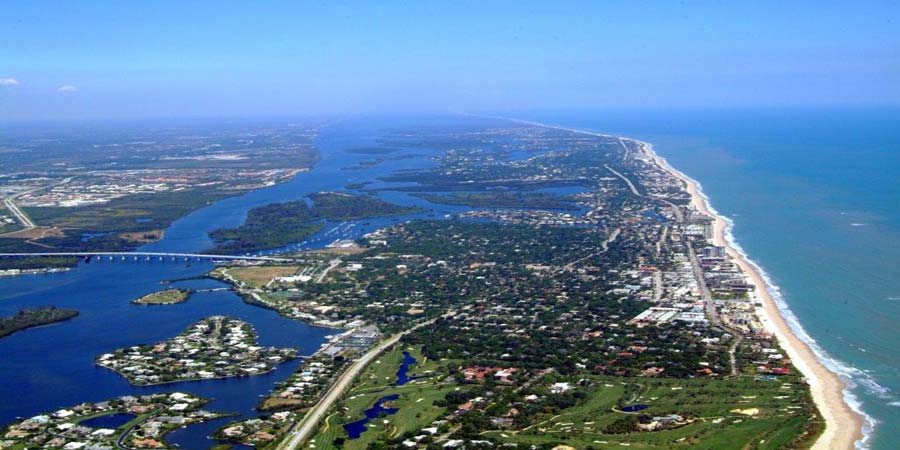
Some of the country’s smallest metro areas have grown mightier.
From 2015 to 2016, quite a few U.S. metro areas traded places in the overall metro population rankings. Some metros went up the ladder and some metros went down the ladder, while others simply stayed on the same rung.
A LawnStarter analysis of U.S. Census Bureau data indicates 10 metro metro areas — all of them with fewer than 220,000 residents — impressively leapfrogged other metros to jump at least five spots in the 2016 population rankings.
None of them, however, shot above the No. 200 spot among the country’s 382 metro areas. Translation: Small metro areas made the biggest gains in the rankings from 2015 to 2016.
Sebastian-Vero Beach has moved up nine spots in U.S. metro population rankings.
Photo: Maronda Homes
Sebastian-Vero Beach Climbs the Ladder
The biggest mover on the ranking chart was Sebastian-Vero Beach, FL, which sits along the Atlantic coast about 80 miles north of West Palm Beach. Sebastian-Vero Beach climbed up nine steps in the rankings — going from the 280th largest metro area in 2015 to the 271st largest in 2016.
“The majority of the growth there since 2010 has been retirees, and it’s likely that is what’s fueling the recent spike in growth,” says Rich Doty, a research demographer at the University of Florida’s Bureau of Economic and Business Research.
Doty says that as Sebastian-Vero Beach gets bigger, it’ll grapple more with issues such as roads, utilities and health care services.
Based on projections from the Bureau of Economic and Business Research, those issues won’t be subsiding in the foreseeable future. The bureau predicts Sebastian-Vero Beach will be home to over 176,000 residents in 2030, up more than 16 percent from 2016.
Aside from bragging rights, what does it mean for Sebastian-Vero Beach (or any other metro area) to soar in the population rankings? Doty says a higher population ranking could be used by economic development boosters to market the region.
Sebastian Inlet Park is among the outdoor amenities in the Sebastian-Vero Beach area.
Photo: Florida Division of Recreation and Parks
Living in Sebastian-Vero Beach
Helene Caseltine, economic development director at the Indian River County Chamber of Commerce in Vero Beach, says the region has not experienced “explosive” growth like other areas of Florida have. But the one-county metro is attracting its fair share of new arrivals.
“Many of those who move into our county are those who have previously vacationed here or have family here, primarily from the Northeast,” Caseltine says. “And as more baby boomers enter retirement, they like the easy and laid-back lifestyle offered in Indian River County. Plus our cost of living is much lower than the areas from where they’ve relocated.”
Some of the people who are relocating to Sebastian-Vero Beach left after high school or college but are migrating back after “realizing that Indian River County is a great place to raise a family,” Caseltine says.
The Vero Beach Museum of Art is one of the area’s cultural gems.
Photo: Windsor
Whoever settles in Sebastian-Vero Beach soon will come to discover that the area lacks major traffic hassles, provides easy access to shops and restaurants, offers year-round outdoor activities, and delivers big-city amenities like the Vero Beach Museum of Art and Riverside Theatre, according to Caseltine.
As noted by BestPlaces.net, “Sebastian and Vero Beach are among the few remaining Florida East Coast places maintaining a small-town flavor not overly tilted toward tourists or retirees.”
10 Metros That ‘Leapfrogged’ the Most from 2015 to 2016
Led by Sebastian-Vero Beach, here are the 10 metro areas that leapfrogged the most in population rankings from 2015 to 2016. If at least two metro areas moved up the same number of spots, we broke the tie by favoring the metro area with the larger population.
1. Sebastian-Vero Beach, FL
2016 metro population ranking: 271
Ranking increase: 9 spots
2016 population: 151,563
2015-16 population increase: 2.6%
2. Coeur d’Alene, ID
2016 metro population ranking: 264
Ranking increase: 8 spots
2016 population: 154,311
2015-16 population increase: 2.6%
3. The Villages, FL
2016 metro population ranking: 316
Ranking increase: 8 spots
2016 population: 123,996
2015-16 population increase: 4.3%
4. Sherman-Denison, TX
2016 metro population ranking: 306
Ranking increase: 7 spots
2016 population: 128,235
2015-16 population increase: 2.1%
5. Bellingham, WA
2016 metro population ranking: 203
Ranking increase: 6 spots
2016 population: 216,800
2015-16 population increase: 2.2%
6. Bend, OR
2016 metro population ranking: 229
Ranking increase: 6 spots
2016 population: 181,307
2015-16 population increase: 3.6%
7. Missoula, MT
2016 metro population ranking: 330
Ranking increase: 6 spots
2016 population: 116,130
2015-16 population increase: 1.9%
8. Bowling Green, KY
2016 metro population ranking: 241
Ranking increase: 5 spots
2016 population: 171,122
2015-16 population increase: 1.5%
9. Logan, UT
2016 metro population ranking: 295
Ranking increase: 5 spots
2016 population: 136,159
2015-16 population increase: 2.3%
10. Wenatchee, WA
2016 metro population ranking: 327
Ranking increase: 5 spots
2016 population: 117,665
2015-16 population increase: 1.4%
Are you a resident of a fast-growth city in need of lawn care? Book lawn mowing online today!
Top photo: VeroBeach.com








